We tried and tested these best selling orthopedic back stretchers (so you don’t have to).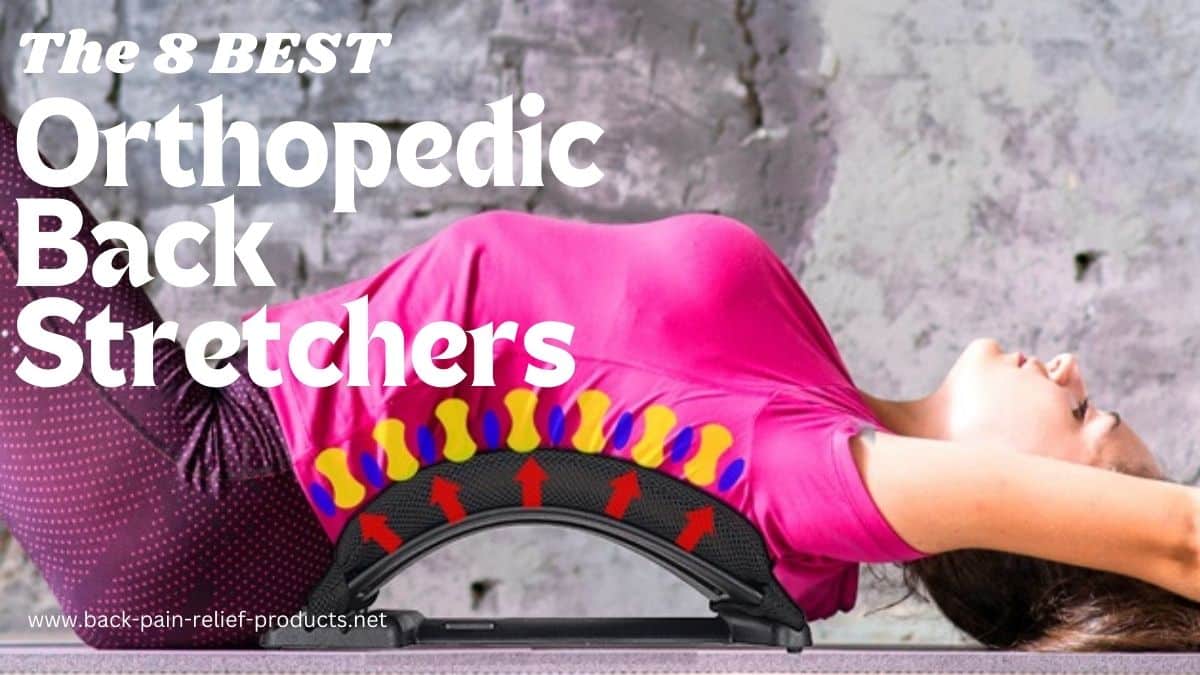
Using an orthopedic back stretcher (a back cracker) is an easy, drug-free, non-invasive, effective, and low-cost treatment to ease back muscle pain and relieve disc-related issues such as Sciatica and bulging discs.
These simple, no-assembly back stretcher devices are anatomically shaped to conform to your spine and realign your vertebrae, to help improve your posture and relieve compression in your nerves and discs.
But:
There are so many back stretchers on the market. How do you choose the best one for you?
We’ve researched and found the 6 best orthopedic lumbar back stretcher devices, reviewed them, and compared them for 2025.
Overview
- Top Pick
- How Does an Orthopedic Back Stretcher Work?
- How to Choose a Lumbar Back Stretcher
- How Much Does a Back Stretcher Cost?
- The 6 Best Orthopedic Back Stretchers
- How to Use an Arched Back Stretcher at Home
- Lumbar Stretchers vs. Inversion Tables
- Orthopedic Spine Stretcher Benefits
- Are Orthopedic Back Crackers Safe?
Top Pick
Our top pick for 2025 is the MINOLL Back Stretcher, a fully adjustable floor back stretcher with 114 acupressure nodes. Here’s why:
- 4 height levels (compared with the average of 3)
- 20 spine grooves and 114 acupressure nodes that feel soft (made from EVA foam)
- Supports up to 400 lbs.
- High ratings on Amazon
This post may contain affiliate links at no extra cost to you.
How Does an Orthopedic Back Stretcher Work?
Orthopedic back stretchers are simple arched lumbar stretchers made of wood or plastic, allowing you to stretch your entire back passively and effortlessly.
Back stretcher devices elongate your spine, creating space between the vertebrae and counteracting the effect of gravity.
This fully relaxes the muscles and allows the spinal discs to rehydrate and heal from injuries.
How to Choose a Lumbar Back Stretcher
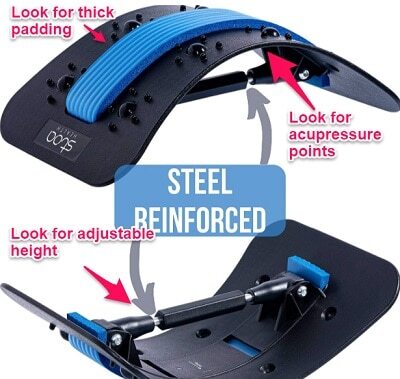
Most arched back stretchers are made from hard plastic, with a softer padded mid-section to protect your spine.
A good stretcher would have thick and comfortable padding for the spine area.
Acupressure points on both sides are a great bonus, and adjustable levels are critical for safety.
The more height levels the stretcher has, the more you can gradually increase your flexibility and healing without injury.
(Read: Can an Acupressure Mat Relieve Back Pain?)
It is also important to check for a sufficient warranty and trial period to allow you to return the product if it’s uncomfortable for you.
How Much Does a Back Stretcher Cost?
In 2025, most orthopedic back stretchers cost between $15 and $30 without shipping.
Wooden back stretchers cost less than plastic ones.
The price mainly depends on the adjustability of the back stretcher, its weight capacity, and its build quality.
The 6 Best Orthopedic Back Stretchers
Although it looks like a torture instrument, the arched back stretcher is based on the principle that lower back pain originates from stiff facet joints.
These facet joints tend to stiffen as you age, so this lifting and stretching movement would encourage mobility and prevent stiffness.
Using a device like this has the opposite effect and stretches you out in the other direction.
Through our research, testing, and trial, here are the 6 best arched back stretchers, our rating, and what we liked about them:
Top Pick |
| ||
With 2 Pads | 3 height levels | ||
Best for Trigger Points | High-quality dense foam | ||
Highest Weight Support | Soft yet durable |
1. Neoathlete Back Cracker – With 2 Pads
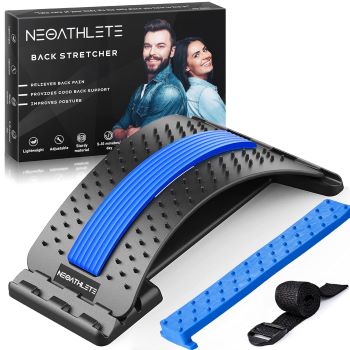
The only back stretcher with TWO spine cushions – gentle yet effective!
VIEW ON AMAZON $10
- Height levels – 3
- Acupressure points – 96
- Weight support – 220 lbs.
The Neoathlete Spine Deck back stretcher is the only one with two spine cushions – a regular one and an upgraded silicone acupressure cushion that will gently massage your spine.
The device has no less than 96 massage points to boost your blood circulation even more, while you stretch your lower and mid back on it.
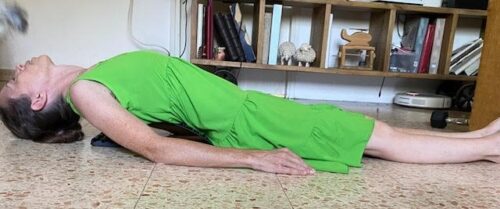
It has 3 height levels and it even comes with a belt strap so you can use it as lumbar support when you sit at work or in your car and stretch your back for 5-10 minutes daily.
We like that it gets us a few good back cracks each time we use it, and that it can support up to 220 pounds.
✅Available on Amazon ($10)
For a more powerful stretch, consider the back stretcher wheel, the innovative upgrade to the regular foam roller!
2. MINOLL Back Stretcher – Most Adjustable
4 height levels and 114 acupressure nodes? This one gave me the most control over my stretch
VIEW ON AMAZON $38
- Height levels – 4
- Acupressure points – 114 (large/small)
- Weight support – 400 lbs.
The MINOLL compact and lightweight lumbar stretcher is the most adjustable one on this list, with 4 height levels ot choose from.
This is a critical feature because many people (including my husband) find that most arched back stretchers cause too much pain during the stretch when the height level basic option is too high.
The relatively soft EVA foam material protects the spine and muscles around it, and all the pressure points provide a good massage and trigger point release while you stretch.
I found this back stretcher easy to use, adjust, and carry around, and I felt immediate tension relief after my first 5 minutes on it.
✅ Available on Amazon ($38)
3. SOLIDBACK Back Stretcher – Best for Trigger Points
180 deep-tissue acupressure points? This thing went straight to my trigger points
VIEW ON AMAZON $30
- Height levels – 1
- Acupressure nodes – 180
- Weight Support – 300 lbs.
The popular SOLIDBACK back stretcher is soft to the touch yet hard and dense and won’t crush under any weight, up to 300 pounds.
It is made from high-quality EVA foam, and the spiky arc shape allows for it to reach deep into your lumbar tissue and makes it especially effective for Sciatica, pinched nerves, scoliosis, spinal stenosis, degenerative disc disease, and bulging discs.
The midsection is designed to align the spine and does not cause pressure on it, and the treatment time is only a few minutes a day (most users feel significant relief after only 5 minutes).
The idea is that you place this on your lower back, just above your tailbone area, and slowly lower your back to create the proper curvature of the spine. This stretches out the muscles and massages them.

However, this one does not allow height adjustment and may be too intense for some people.
✅ Available on Amazon ($30)
Best Alternative – The LTUMHGCR Back Stretcher
The LTUMHGCR Back Stretcher is almost the same as the Solidback but offers 3 adjustment levels to choose from and is made from a durable material.
4. Magic Back Support – Most Comfortable
It’s the most comfortable one yet
VIEW ON AMAZON $28
- Height levels – 3
- Weight support – 320 lbs.
- Acupressure points – 0
The Magic back support stretcher comes with a high-quality memory foam cushion that softens the pressure on the lumbar vertebrae and thus can also be used as an office chair and car chair back support (with the added strap).
The memory foam cushion is encased in a removable and breathable mesh cover that deters sweat and stays cool, and you can choose from 3 height levels when you stretch your back.
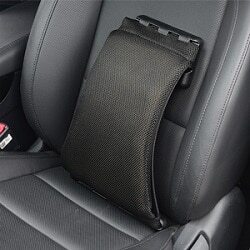
Our research shows this is a highly comfortable lumbar back stretcher and a good posture corrector when you sit at your office or drive long hours in your car.
The high weight support proves this one is durable and won’t break under your back after a few months.
✅ Available on Amazon ($28)
5. Jimugor Electric Low Back Stretcher – Best Electric with Heat
Stretch, heat, and massage – all at once
It is well established that heat and massage significantly boost the effectiveness of every back stretcher (that’s why you’ll find top-selling inversion tables with heat and vibrating foam rollers).
If you want to stretch your lower back effortlessly while getting a gentle, heated massage to ease your back pain and sciatica, the Jimugor electric back stretcher is your best choice.
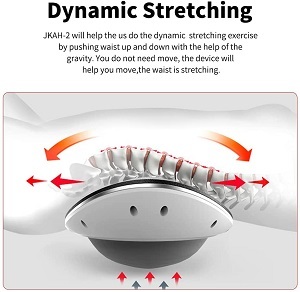
All you have to do is lie flat on the device, choose the vibration and heat intensity via the remote, and it will push your waist up and down and add auxiliary infrared heat that also massages your lower back and hips.
A great choice for muscle knots, sciatica, and bulging discs.
Pros
- Handheld remote control and impressive features
- Stretching, heat, and massage combined – speedier recovery time
- Adjustable deep penetrating heat (3 levels – 45 – 65 degrees C)
- 3 Adjustable vibration levels
- 30-day money-back guarantee on Amazon
Cons
No height level adjustment like the non-electric models
✅ Available on Amazon ($101)
How to Use an Arched Back Stretcher at Home
Here’s exactly how to use a back stretcher safely and effectively:
- Once you’ve assembled your back stretcher (which takes less than a minute), choose the level of stretch you want. It is advised to start gradually with the first level, especially if your back is very stiff or painful.
- Lay your lower back against the back stretcher, then lie back and lift your hands over your head if possible, for a full stretch. Taking deep breaths will amplify the stretch.
- If it’s your first time, do not use the back stretcher for more than 5 minutes. With time, you can gradually work your way up to 15 to 20 minutes a day. Do not use more than twice daily.
- When you are finished, roll off the stretcher slowly by bending your knees and then rolling down on your right or left side.
How Long Should You Lie on a Back Stretcher?
Orthopedic back stretchers only require a few minutes of treatment (5-20 minutes), up to twice a day.
Start gradually with no more than 5 minutes, and work your way up to 20 minutes daily until you get results.
Lumbar Stretchers vs. Inversion Tables
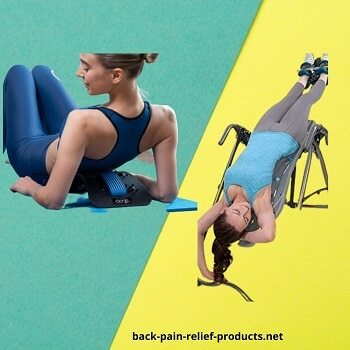
Other than lumbar stretchers, there are other ways to decompress your spine at home safely.
The most powerful one is using an inversion table.
Inversion therapy using a decompression table is quite different than using an arched back stretcher.
Inversion tables use gravity and your body weight to create highly adjustable traction to full inversion (hanging upside down – 180 degrees).
Upside-down back stretchers work on your entire back (lower area, mid and upper area, and neck area) and have many more health benefits, including improved blood circulation, cognitive abilities, and more.
Related: The 3 best inversion tables under $150
Orthopedic Spine Stretcher Benefits
Orthopedic back stretches loosen your back muscles the second you lie on them.
Once your muscles are relaxed, the back stretcher can start working by vertically elongating your spine, creating space between the vertebrae, and allowing full relaxation of your back muscles.
This counteracts gravity (which pulls the spine down as we age) and allows us to relieve compression in our spinal discs (or pinched nerves).
When compression is reduced, healing nutrients and pain-relieving components can flow much better to the area and speed up healing and rehabilitation.
Regular stretching with orthopedic (arched) back stretchers can help, whether an injury causes your back pain, chronic posture-related back pain, or a degenerative condition such as degenerative disc disease.
Here is the complete list of back stretcher benefits:
- Its anatomical shape conforms to your spine
- Passive, gentle stretch – designed with therapeutic comfort in mind.
- It only takes 5 minutes twice a day to achieve results
- Increases flexibility and loosens muscles
- Relieves stress
- Corrects posture
- Prevent morning back stiffness when used before sleep
- Saves money by not having to go to a chiropractor as often
- Low cost
Who Can Benefit From a Back Stretcher?
Almost anyone suffering from acute or chronic back pain can benefit from a back traction device:
- Sciatica (relieves the shooting pain of Sciatica by reducing compression in the vertebrae)
- Bulging disc
- Back pinched nerves
- Lower back Arthritis
- Degenerative disc disease
- Back muscle strain
- Scoliosis
- Poor posture
- Lumbar spinal stenosis
If you need to do cervical traction, see our posts about the best neck traction devices for home use.
Are Orthopedic Back Crackers Safe?
Orthopedic back stretchers are generally safe for adults and are considered safe for everyone when used on the first level.
Going up to higher levels of stretch should be done gradually and carefully.
We advise you not to use a back stretcher if you are pregnant, have infused vertebrae, or have osteoporosis without checking with your doctor first.
When you first try it, it will be slightly painful, but try to endure the initial pain and stay on it.
After about 30 seconds, your back will feel better, the longer you stay on it.
Also, if you feel your pain worsen, stop using the spine stretcher immediately.
To your health and happiness,
The Back Pain Relief Products Team
Studies
Dreyer SJ, Dreyfuss PH. Low back pain and the zygapophysial (facet) joints. Arch Phys Med Rehabil. 1996 Mar;77(3):290-300.
Khalil TM, Asfour SS, Martinez LM, Waly SM, Rosomoff RS, Rosomoff HL. Stretching in the rehabilitation of low-back pain patients. Spine (Phila Pa 1976). 1992 Mar;17(3):311-7.
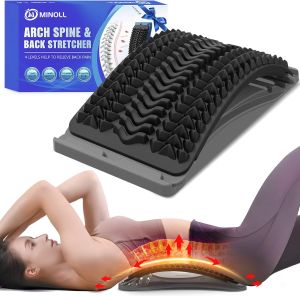
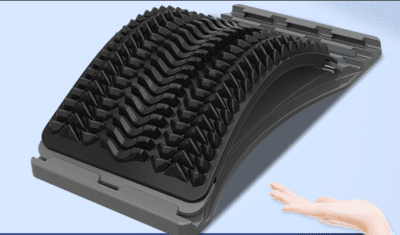



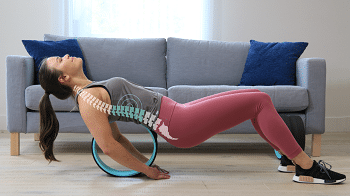
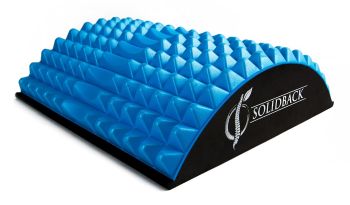
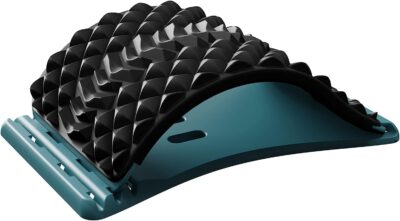
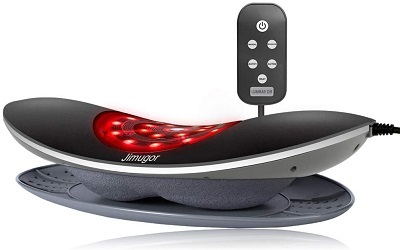
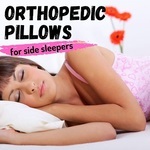
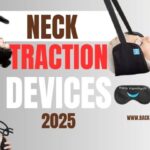
It would be so helpful to see the costs for these different stretchers without having to click on the them!!!
Would ChiSoft work for a tall, long-waisted woman? I’m 5’9” tall.
Yes, it would. Good luck!
Thanks for the review. Could you tell me if any of the above products will help to correct Kyphosis? They seem to focus on the lower back and not the upper back. The only one that seems to accommodate the upper back is “True Back”. I also have lower back problems, but I have been told that they are due to my Kyphosis. What product do you think would be best to address Kyphosis and do you think they could correct posture/spine curvature over time? I’m in my 60s. Thank you.
For Kyphosis I would suggest trying a posture corrector like this one – https://amzn.to/3hBDyJs – that can reduce the strain on your muscles and allow you to do daily exercises for Kyphosis. These two combined can relieve and improve Kyphosis.
I’m 68 years old and have had 3 lower back surgeries
1983 – L5-S1
2009 – L4/5
2018 L4/S1
I still have a lot of back and hip pain. Might a back stretcher help?
It can help, yes, but I advise you to consult with your doctor if it’s safe to do after surgeries.